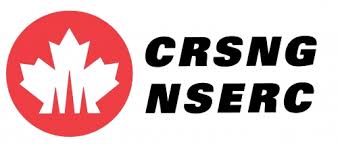NSERC/Hydro-Québec Industrial Research Chair on Life Cycle Optimization for Embankment Dams
Chaires de recherche en partenariat
Domain(s):
- Sciences et génie

Jean-Marie Konrad
Full Professor
Faculty of Science and Engineering
Jean-Marie Konrad
Jean-Marie Konrad is a professor at the Department of civil and water engineering of Université Laval since 1990. Throughout his career, he received numerous awards and recognitions. He notably is a Fellow of the Canadian Academy of Engineering since 1999 and a Fellow of the Engineering Institute of Canada since 2003. He received the Roger-J. E. Brown award from the Canadian Geotechnical Society in 2000 and 2005 for his exceptional contribution to the science and engineering of permafrost. He recently had the honour to give the R.M. Hardy keynote address at the opening of the Canadian Geotechnical Conference in Quebec City in 2015.
Jean Côté
Full Professor
Faculty of Science and Engineering
Jean Côté
Jean Côté is a professor at the Department of civil and water engineering of Université Laval since 2009. Since the beginning of his career, he has distinguished himself for his remarkable involvement in the geotechnical community both nationally and internationally. He is a member of the Geotechnical Research Board and the Cold Regions Geotechnical Division of the Canadian Geotechnical Society. In 2005, he also received the Canadian Geotechnical Society’s Roger-J. E. Brown award for his exceptional contribution to the science and engineering of permafrost.
Chair holder’s Areas of expertise
|
Embankment dams |
Objectives
- Provide better understanding of the behaviour of materials used for the construction of embankment dams
- Characterize the hydric, thermal and mechanical behaviours of embankment dam materials
- Model and predict the behaviour of embankment dams under normal and exceptional solicitations such as earthquakes
- Facilitate the interpretation and representation of data collected during the monitoring of the dams
- Develop selection criteria for different materials in order to optimize the dams’ life service
- Establish critical threshold of seismic behaviour for the inspection of embankment dams
According to the International Commission on Large Dams (ICOLD), 75 % of dams built in the world are embankment dam (earth dams). The imperviousness of embankment dams is assured by fine granular materials put in place or by an impervious element. As the construction of embankment dams involves granular materials found near the construction sites, those dams represent a top choice for remote areas.
Embankment dams performance and life span are closely related to the hydric, thermal and mechanical behaviour of materials from which they are built. The apparent simplicity of embankment dams hides complex and often poorly understood behaviour resulting from thermo-hydro-mechanical coupling phenomena. Understanding the different behaviours as well as their relationships is of paramount importance to optimize the life cycle of these structures.
Mission
Develop tools to analyze and predict the behaviour of embankment dams through:
- a deeper understanding of the behaviour of materials used in the construction of embankment dams
- the development of an effective system to process data collected during the monitoring of existing structures to develop robust and reliable modelling tools
Research impacts
The benefits generated by the second phase of the NSERC/Hydro-Québec Industrial Research Chair on Life Cycle Optimization for Embankment Dams will be important for the partners and for the entire Canadian society.
A better understanding of the thermic, hydric and mechanical behaviour of construction materials will improve the design of embankment dams, avoiding subsequent default correction works, which represent important spending because of the remoteness associated with such structures. Furthermore, the development of dynamic analysis tools will greatly help to evaluate the behaviour of embankment dams subjected to seismic solicitations.
NSERC/Hydro-Québec Industrial Research Chair on Life Cycle Optimization for Embankment Dams
Pavillon Adrien-Pouliot, bureau 2912 B
Université Laval
1065, avenue de la Médecine
Québec (Québec) G1V 0A6
